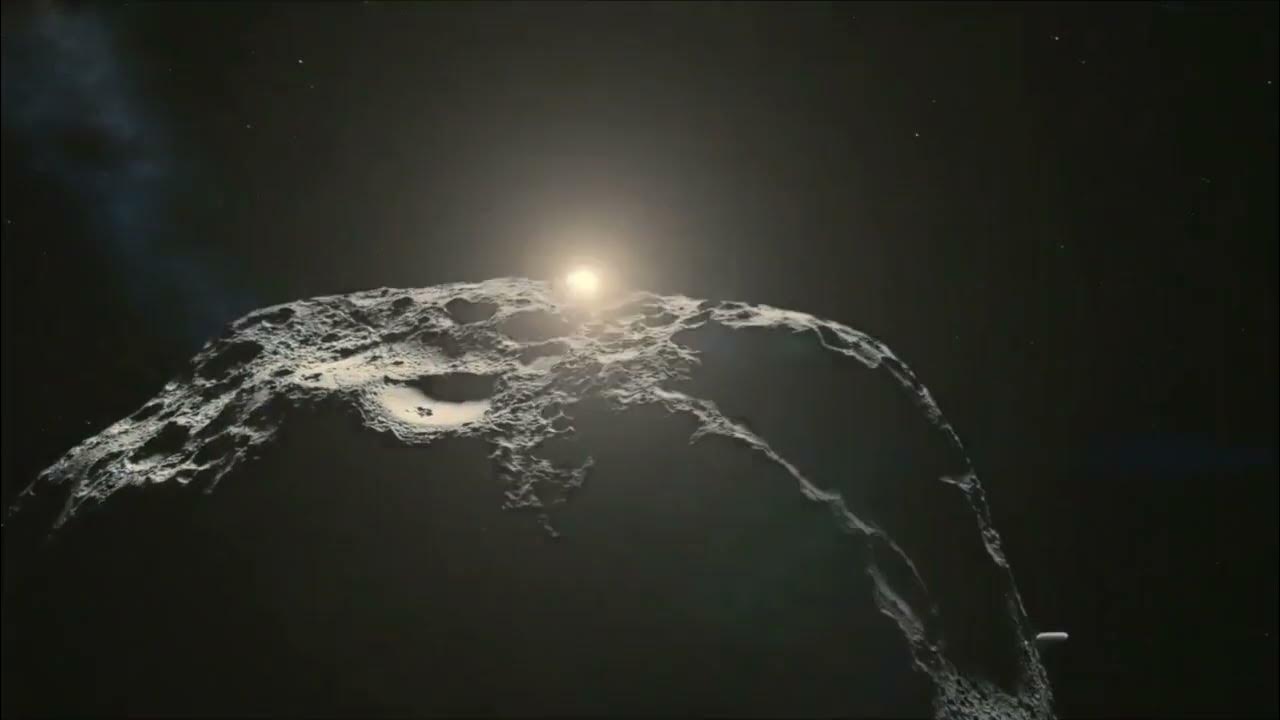Perjalanan ke Seluruh Planet di Tata Surya 3D
Summary
TLDRThis script takes viewers on an awe-inspiring journey through our solar system, starting with the Sun and exploring each planet in detail. From the blistering heat of Mercury and Venus to the frigid surface of Neptune, it paints a vivid picture of the extreme conditions on each planet. The journey highlights breathtaking features such as Jupiter's Great Red Spot, Saturn's stunning rings, and the icy atmosphere of Uranus. As the spacecraft travels farther into space, the narrative emphasizes the challenges of exploring these distant worlds, ending with the return to Earth after an unforgettable adventure.
Takeaways
- 😀 The Sun's surface is a nearly perfect, round shape, with plasma reaching temperatures of 5500°C, though its core is much hotter at 15 million °C.
- 😀 The distance to the Sun from Earth is approximately 150 million kilometers (about 400 times the distance to the Moon).
- 😀 The Sun's surface features granules, each the size of approximately 700,000 km², formed by gas swirling rapidly.
- 😀 Mercury, the closest planet to the Sun, has a rocky surface with temperature extremes ranging from 426°C during the day to -179°C at night.
- 😀 Venus has an extremely thick atmosphere made of carbon dioxide, with sulfuric acid clouds and a surface temperature of 471°C due to a greenhouse effect.
- 😀 Mars has a cold and dusty surface with temperatures averaging -62°C, and features the tallest volcano (Olympus Mons) and the longest canyon (Valles Marineris) in the solar system.
- 😀 Jupiter is a gas giant, with an equatorial diameter of 143,000 km, and its Great Red Spot, a massive storm, has been raging for over 360 years.
- 😀 Saturn is another gas giant, with a fascinating array of rings made of ice and rock, and a moon called Titan that is larger than Mercury.
- 😀 Uranus is a blue-green ice giant with a unique axis tilt, and its temperature fluctuates, leading to massive storms that can travel vast distances.
- 😀 Neptune, the farthest planet from the Sun, has extreme weather conditions with winds reaching speeds of 1930 km/h, and its surface temperature can drop to -206°C, while its core is much hotter at over 6650°C.
Q & A
What is the primary characteristic of the Sun's surface?
-The Sun's surface is a boiling mass of plasma, almost perfectly spherical, and formed by granules. These granules are about the size of Kalimantan, and they spin at super-fast speeds, creating the Sun's magnetic fields.
Why is the temperature on Mercury so extreme?
-Mercury has no atmosphere to retain heat, causing daytime temperatures to rise up to 426°C, while nighttime temperatures plummet to -179°C.
What unique feature does Venus' atmosphere have?
-Venus' atmosphere is extremely thick, made up of carbon dioxide, which creates a pressure 90 times stronger than Earth's. This atmosphere also causes a runaway greenhouse effect, raising temperatures to 471°C.
What is the most notable feature of Mars?
-Mars is known for its red surface, covered in dust and rocks. It also contains the largest volcano in the solar system, Olympus Mons, which is 2.5 times the height of Mount Everest.
Why is Jupiter's Great Red Spot significant?
-The Great Red Spot is a massive storm on Jupiter that has been raging for over 360 years. It is large enough to fit Earth within its boundaries and is one of the most recognizable features of the planet.
What is unique about Saturn's rings?
-Saturn's rings are made up of particles of ice and rock, and they create a beautiful, multi-colored halo around the planet. The rings are one of Saturn's most iconic features.
What causes Uranus' unusual orientation?
-Uranus is tilted almost 90 degrees on its axis, likely due to a massive collision with another object early in the planet's formation.
What can you observe on Neptune's surface?
-Neptune has a deep blue appearance due to methane in its atmosphere. The planet is known for its violent storms and extremely high winds, with speeds reaching up to 1930 km/h.
Why can't spacecraft land on Jupiter or Saturn?
-Both Jupiter and Saturn are gas giants with no solid surface. Their atmospheres consist mostly of hydrogen and helium, making it impossible for a spacecraft to land on them.
How does the temperature vary from Neptune's surface to its core?
-Neptune’s surface temperature is around -206°C, but its core reaches temperatures of over 6650°C, creating a significant temperature difference that contributes to the planet's strong winds and storm activity.
Outlines

Cette section est réservée aux utilisateurs payants. Améliorez votre compte pour accéder à cette section.
Améliorer maintenantMindmap

Cette section est réservée aux utilisateurs payants. Améliorez votre compte pour accéder à cette section.
Améliorer maintenantKeywords

Cette section est réservée aux utilisateurs payants. Améliorez votre compte pour accéder à cette section.
Améliorer maintenantHighlights

Cette section est réservée aux utilisateurs payants. Améliorez votre compte pour accéder à cette section.
Améliorer maintenantTranscripts

Cette section est réservée aux utilisateurs payants. Améliorez votre compte pour accéder à cette section.
Améliorer maintenantVoir Plus de Vidéos Connexes

Cosmos A Spacetime Odyssey episode 1 part2

Everything About Solar System | Solar System Explained | The Dr Binocs Show | Peekaboo Kidz

Planet-Planet di Tata Surya: Keunikan & Karakteristiknya🌎✨

Planet-Planet di Tata Surya, Ditinjau dari Dalam

Conheça o SISTEMA SOLAR e seus Planetas

38 Fakta Luar Angkasa yang Bisa Kamu Pelajari Tanpa Buku Pelajaran
5.0 / 5 (0 votes)
